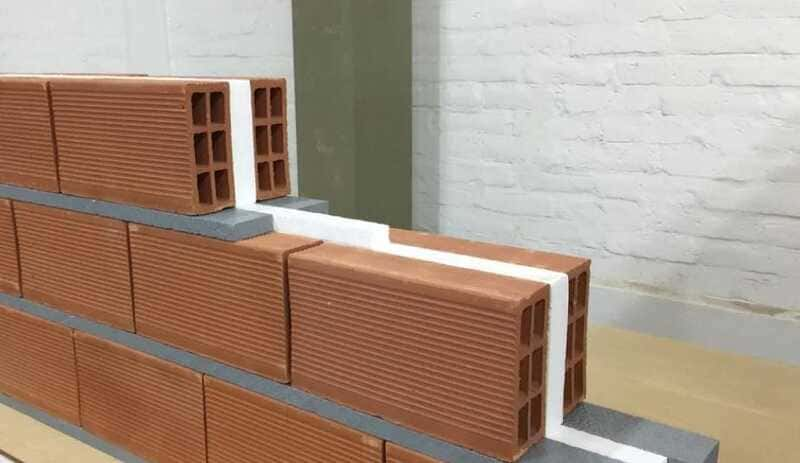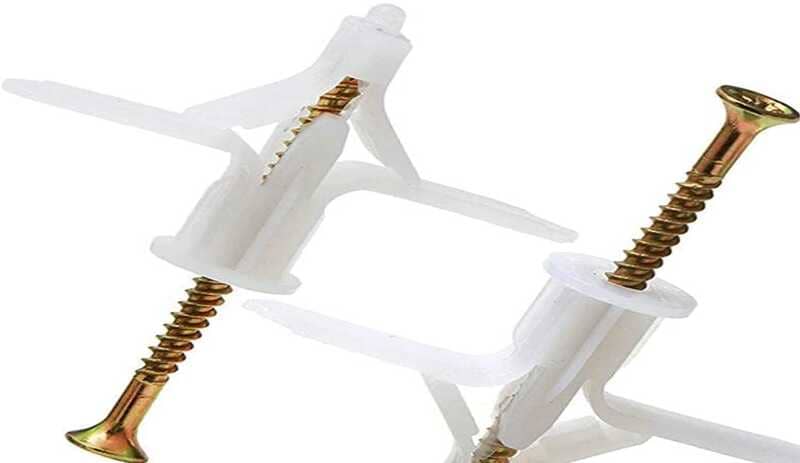When it comes to hanging something on a hollow wall, such as shelves, mirrors, cabinets or even televisions, it is important to make sure that the anchor used is strong enough to support the weight of the object.
Hollow walls are not as strong as solid walls, so special anchors are needed to keep objects hanging securely and stably. In this article, we’ll explore the different types of hollow wall anchors, how to choose the right anchor for your project, and how to install them correctly.

We’ll also address common problems that arise when using hollow wall anchors and how to fix them. By the end of this article, you’ll have a thorough understanding of the types of hollow wall anchors available and how to use them effectively to hang your items safely.
What is a cavity wall and why are special anchors needed?
A cavity wall is a type of wall that is constructed with an internal cavity that gives it its name. Unlike solid walls, cavity walls have an empty space inside, which makes them less strong and more prone to damage if too much pressure is applied to them. This is why special anchors are needed to secure objects to these walls, as traditional anchors, such as nails and screws, do not provide sufficient support.

There are different types of hollow wall anchors, each designed to meet specific needs. Some of these anchors use expansion to attach to the wall, while others use a spring or screw for added strength. Hollow wall anchors can be made of plastic, metal or a combination of both materials, and each has its own advantages and disadvantages.
The use of hollow wall anchors is not only necessary to ensure the safety of hanging objects, but also prevents damage to the wall itself. When too much pressure is applied to a hollow wall, it can crack or deform, which can be costly and difficult to repair. Proper hollow wall anchors can prevent these problems, providing a secure hold without damaging the wall.
Types of hollow wall anchors: expansion, spring, screw and others.
There are several types of hollow wall anchors that are used depending on the load and type of wall. One of the most common is the expansion anchor. This anchor works by inserting a piece of plastic or metal into the cavity wall, causing it to expand and fit within the space. The hollow wall expansion anchor provides a firm hold and can be used for medium to large objects.
Another type of hollow wall anchor is the spring anchor, which works by inserting a metal spring into the hollow wall and tightening it with a screw. This type of anchor is ideal for smaller, lighter objects, such as pictures and mirrors.

The screw anchor, also known as a self-drilling anchor, is a popular choice for shelf and cabinet installation. This type of anchor has a special thread that drills into the wall at the same time it is screwed in. The screw anchor provides a strong hold and can be used for medium to large objects.
In addition to these types of hollow wall anchors, there are others available on the market, such as steel expansion anchors, which are strong and durable, and nylon anchors, which are inexpensive and easy to use.
In general, the choice of the type of hollow wall anchor depends on the weight and size of the object to be hung, as well as the type of wall. It is important to follow the manufacturer’s instructions to install the anchor correctly and to make sure it is strong enough to support the load. With the right anchor, it is possible to hang objects securely in a hollow wall without damaging the wall or compromising safety.
How to choose the right anchor for different types of cavity walls.
Choosing the right anchor for a cavity wall can be a challenge, as there are many factors to consider. One of the most important factors is the type of wall. Cavity walls can be made of different materials, such as plaster, hollow brick, hollow concrete block or drywall.
For gypsum walls, expansion anchors and screw anchors are popular choices. Expansion anchors are ideal for heavier loads, while screw anchors are better for light to medium loads. For hollow brick or hollow concrete block walls, spring anchors are usually a good choice for light loads.
For drywall walls, nylon or metal expansion anchors are recommended. These anchors expand within the wall, creating a firm and secure grip. For thinner walls, screw anchors or spring anchors can be used.
It is important to consider the weight and size of the object to be hung when choosing the appropriate anchor. It is also important to follow the manufacturer’s instructions for installing the anchor correctly and to make sure it is strong enough to support the load.
How to install hollow wall anchors: steps and precautions.
Installing hollow wall anchors may seem simple, but it is important to follow certain steps and take precautions to ensure that the installation is safe and effective.
First, it is important to select the right anchor for the weight and size of the object to be hung. In addition, the type of wall must be taken into account in order to choose the correct anchor.
Once the anchor is selected, the next step is to drill a hole in the wall with the appropriate tool. It is important to follow the manufacturer’s instructions to drill the hole in the right place and the right size for the anchor.

Once the hole is drilled, insert the anchor into the wall and make sure it is securely fastened. It is important to verify that the anchor is level and in the proper position before proceeding.
The screw should then be inserted into the anchor and carefully tightened. It is important not to overload the anchor, as this may damage the wall or cause the anchor to come loose.
Finally, hang the object on the screw and make sure it is level and secure.
It is important to take certain precautions when installing hollow wall anchors. For example, avoid drilling holes near electrical outlets, pipes or plumbing wires. Also, avoid overloading the anchor and always follow the manufacturer’s instructions for proper installation.
Common applications for hollow wall anchors: shelves, cabinets, mirrors, etc.
Cavity wall anchors are widely used in a variety of applications, from installing shelves and cabinets to attaching mirrors and pictures. These anchors allow objects to be attached to walls that would otherwise not be strong enough to support the weight.
One of the most common applications for hollow wall anchors is shelves. Shelves can be used to store books, decorations or even electronic equipment. Cavity wall anchors allow the shelf brackets to be securely attached to the wall, ensuring that the shelf can support the weight of the objects that are placed on it.
Another common application for hollow wall anchors is cabinets. Closets can be used to store clothing, shoes and other personal items. Hollow wall anchors allow the closet brackets to be securely attached to the wall, ensuring that the closet is strong enough to support the weight of clothing and other items.
Cavity wall anchors are also used to attach mirrors and pictures to the wall. These anchors allow mirrors and pictures to be hung securely, preventing them from falling and breaking.
In addition, hollow wall anchors can be used to fix televisions, lamps, curtain rods and other similar objects. These anchors offer a safe and effective solution for fixing objects to hollow walls, allowing people to customize their space according to their needs.
Common problems when using cavity wall anchors and how to solve them.
Although hollow wall anchors are an effective solution for attaching objects to walls, problems can sometimes arise when using them. One of the most common problems is that the anchors can pull out of the wall over time, which can be dangerous and cause damage to the attached objects.
Another common problem is that anchors may not support the weight of the objects attached to them. This can be due to improper anchoring or choosing a hollow wall anchor that is not strong enough for the object being attached.
To solve these problems, it is important to choose the right type of anchor for the object being fastened. In addition, it is important to ensure that the anchor is installed correctly, following the manufacturer’s instructions. If the anchors have been installed correctly and you still feel insecure, it may be necessary to consider using a stronger anchor.
Another common problem is that anchors can damage the wall when installed or removed. This can be especially problematic on painted or papered walls, where the damage can be visible and difficult to repair.
To avoid this problem, it is important to ensure that the anchor is installed in the strongest part of the wall and that the manufacturer’s instructions for installation and removal are followed. In addition, it is advisable to use a cavity wall sealant to reduce the risk of damage.

